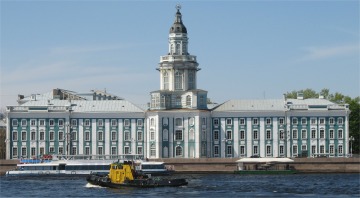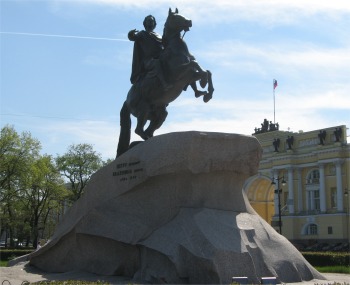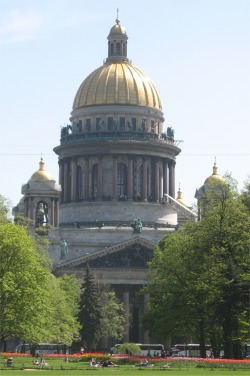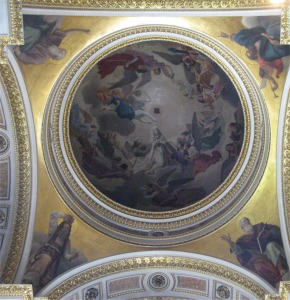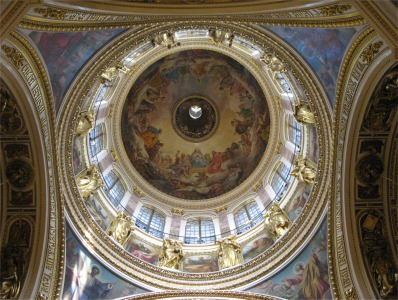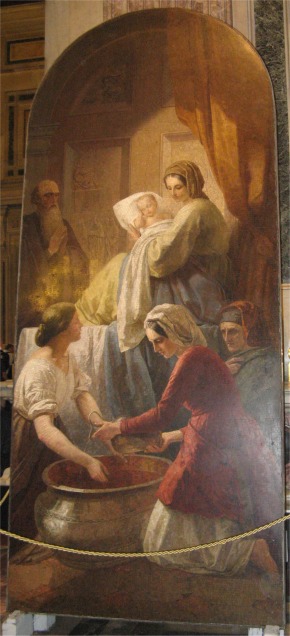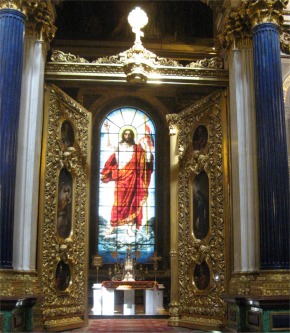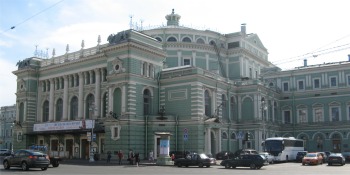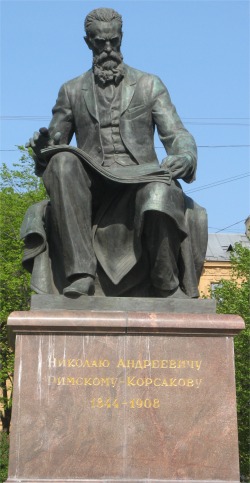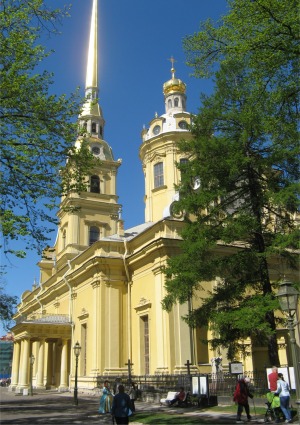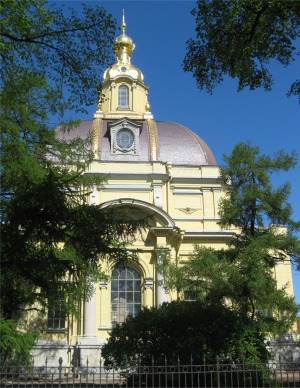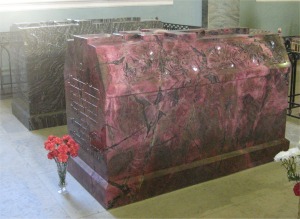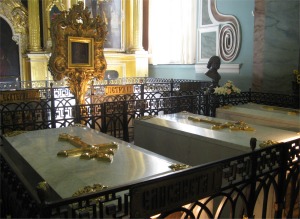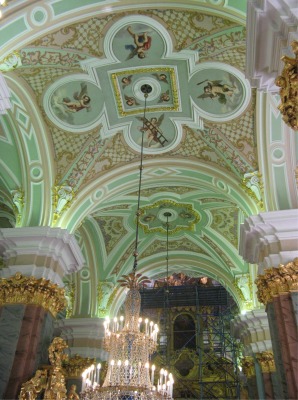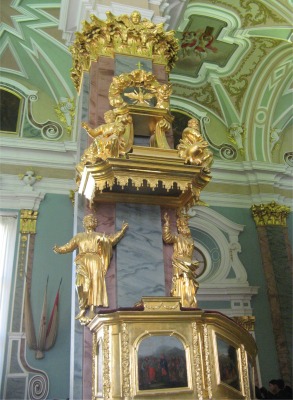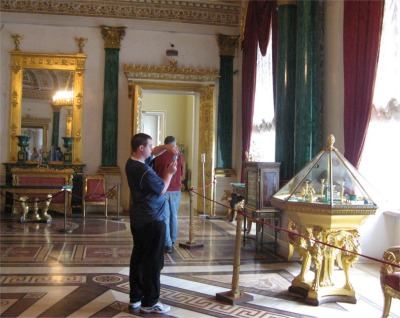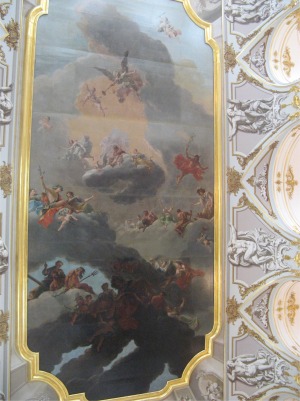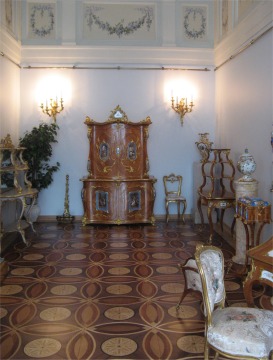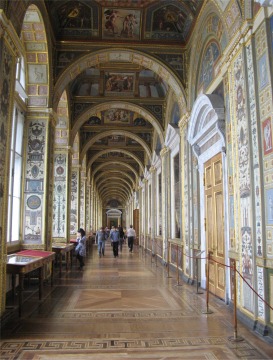It wasn't long before we reached the shipping channel we were obliged to follow. At this point it was a couple of miles wide, but we knew if would narrow considerably as we approached St Petersburg. The Russians liked to restrict craft to confined areas that they could easily monitor and police, and took no prisoners for those caught trespassing beyond the limits. One ship overtook us about a boats length away. That was too close for comfort, therefore in order to avoid being run down, we clung to just outside the channel, taking great care to keep clear of the prohibited areas.
We were faced with a novel problem now. Having spent the best part of three weeks at slow speeds because of the wind shortcomings, we had made lightening speed since leaving Helsinki. Our concern now was arriving too early at the customs post in St Petersburg; we had been obliged to inform customs some time in advance of when we would turn up, and that would be the time when we must turn up. I am not sure if bad weather would be an acceptable excuse for being late, but boats had to leave before visas ran out, bad weather or not.
The tedium of the final stretch into St Petersburg was broken up by a large tanker who weighed anchor and decided to cut across our bow, booming his horn as he did so. Poor Rex felt badly treated, it always happened on his watch.
The dark shores of the Russian mainland closed in upon us as we neared our destination. As darkness fell, stretches of the shoreline twinkled as if they had been sprinkled with orange glowworms, the burn-offs from a number of refineries, each surrounded by the squat outlines of fleets of oil tankers.
The shipping channel was now getting narrow and crowded. One large cruise ship was desperate to overtake a slower vessel that was weaving its way along the shipping channel. The bridge of the cruise ship was calling up the other ship on channel 16, presumably to ask the slower vessel to steer a straight course along the outer limit of the channel so that it could be overtaken. The slower vessel never responded to any of the cruise ship calls, either because there was nobody who understood English, or they were dozing off or playing cards or whatever whilst moving under autopilot. I guess the cruise ship reached St Petersburg a tad late.
Periodically we would get a call from a coastguard official asking us to state our current position. No doubt we were being watched on radar all the way, and occasionally visually. Indeed on my evening watch we were trailed by a large Russian coastguard vessel, which circled us a couple of times before getting bored and disappearing way astern of us. On odd occasions, the coastguard would call us up, we acknowledged, and there would be an endless loop of the coastguard stating, "Yacht Kiitaja", to which we responded with, "This is Kiitaja". The coastguard would give up after a while. Then we twigged that perhaps those particular coastguards spoke very little English, hence the stilted conversation. For future calls we always stated our position, and that seemed to keep the "watchers" perfectly happy.
20th May
 Convoy Stretching to the Horizon, Moving Down the Narrow Shipping Channel |
At a given buoy, we reported into the coastguard as requested, which appeared to be just a formality, and headed on to the island of Kronstadt, about 30 km out from St Petersburg. This island was connected to the mainland by a tidal barrage system, providing similar protection to the city as the Thames barrier. It would also make an ideal defence barrier.
Kronstadt Island had once been heavily militarised, and until 1992, the only way a foreigner could visit it was by being disguised as a Russian. In 1921 the Kronstadt sailors staged a revolt, demanding freedom of speech and assembly, and the abolition of Bolshevik dictatorship. Just before dawn on March 6th, 45,000 Red Army troops advanced across the iced over sea to Kronstadt. When they were within 500m of the fortress, the island's canons opened fire, rupturing the ice, causing a third of the troops to drown. The assault continued with volunteers laying ladders across the ice floes, and the fortress was eventually stormed. 30,000 were killed on both sides in the struggle, and 2,000 sailors were executed on the spot. Many more were sent to the Gulag.
The last 15 miles to the St Petersburg customs was spent tootling along just outside the now 200m wide busy shipping channel, trying to make the journey last almost 4 hours so that we could arrive at our allotted time slot. It was a beautiful calm morning with a welcoming, warm sun climbing up from the hazy horizon.
We tied up to a jetty and waited for either customs or Vladimir to turn up. A Russian official turned up in his smart uniform; he must have been all of 17 years old. He spoke no English, just looked around the boat to check that there were indeed only three of us, and disappeared. Precisely at 10am, Vladimir turned up with two young women who were smartly dressed in differing uniforms. They just inspected our passports and left.
Vladimir remained and had a very long chat with us. He was a friendly welcoming chap with an excellent command of English. At one time he had been a civil engineer, but over time he had helped other foreign vessels through the hoops and hurdles of gaining access to Russia. He now provided this service full time, and was an honorary member of umpteen sailing organisations. Typically he would be dealing with 30 - 40 foreign vessels each year (though the season is short at that latitude). Apparently we were the first foreign boat this year.
After the customs officials had dealt with all the passengers who had alighted from a large Helsinki - St Petersburg ferry, Vladimir took Alan to get all our paperwork processed. This was a very time consuming affair with the same two women who had visited the boat earlier. Lots of form filling in triplicate, only to be torn up because the signatures were in blue whilst the rest was in black. Once all had been processed for one woman, identical forms had to be completed for the other woman sitting at the next table. Vladimir apologised for the idiotic beaurocracy; he said that as a Russian you just learn to live with it. Some things had improved in Russia over the last couple of decades, but the state still loved its bureaucracy. I pointed out to him that at one time Russians would have been terrified to be seen talking to a westerner. Vladimir then related a story of how many years ago he had befriended an American couple, and then had to suffer being interrogated by the KGB, as did his wife. When he later did his national service, rather than being allowed to stay at his native St Petersburg, he was posted down to Moscow, where the officials had been instructed to give him a particularly hard time. Things have now changed for the better, though security is being tightened because of terrorism.
After an age, we were done with customs inbound, and we left for our marina on Krestovsky Island. Krestovsky Ostrov (Island of the Cross) is the largest of the three Kirov Islands, which stand north of the Petrograd Side in the Neva delta. It has for centuries been a popular playground for the general populace of St. Petersburg, with much of the island common ground from the beginning of the 19th century. Today it is rapidly turning into the city's smartest suburb, with an ever-increasing number of elite housing developments encroaching on the public park. However, it still attracts hordes of visitors at weekends, coming to walk through the island's rambling parkland, take advantage of the numerous sporting facilities available, or to visit the Diva Ostrov amusement park.
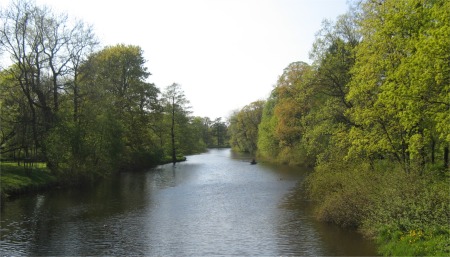 Park for Culture and Rest |
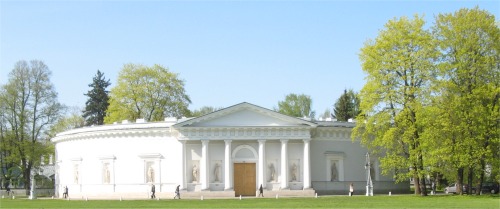 Catering Corp Building in the Park for Culture and Rest |
In the afternoon I took a leisurely stroll to find where the metro was on the island, and then I crossed one of the many Neva River sections to an island that was reserved purely as a park for culture and rest. It was a sizeable island in its own right, full of trees with the occasional flower beds ablaze with tulips. There were many waterways and boating areas in this park, music pavilions, a museum and tennis courts. Hoards of people were out strolling, cycling, roller skating or fishing - a refreshing breathing space so close to the city.
In the evening we spruced ourselves up and went off and enjoyed a tasty meal in a nearby restaurant, toasting ourselves, and our epic 1,400 mile adventure so far, with Russian beer, an appropriate way to mark this milestone. The restaurant service was rather unique; the vegetables ordered with some of the meals turned up after the meals had been eaten. We weren't sure if this was a Russian tradition, but the elation of reaching Russia brushed all this aside.
21st May
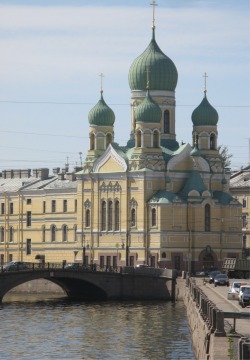 Kanal Griboedova |
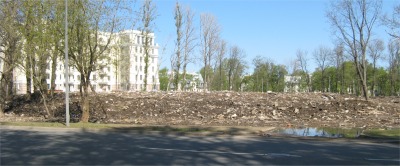 Rubbish Dump on Krestovsky Island |
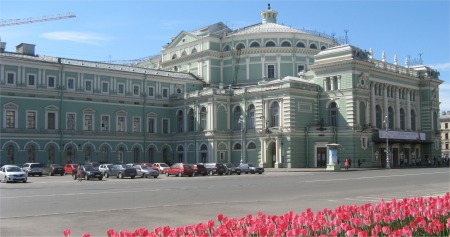 Mariinskiy Theatre |
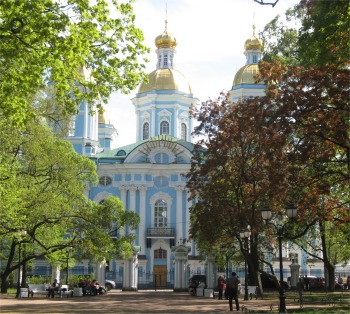 St Nicholas' Cathedral |
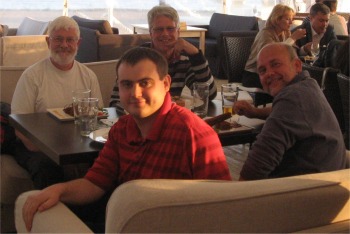 Meal Out Near the Marina |
We found our way back to the boat, freshened up and retired to a restaurant for an excellent meal. It was a lovely evening, and Dan was amazed to see that there was still daylight at midnight. However, such things don't last for long; a disco nearby was pumping out loud music until 06:30 - Alan was not amused.
22nd May
Today we had arranged for Vladimir to take us on a guided tour to places off the standard tourist beaten track, which was our request.
The city we were about to explore had a chequered history. Its founder, Peter the Great (1682 - 1725), was born into rivalry between his mother's family, and that of his father's first wife. So severe was the broken family relationships, that it resulted in Peter witnessing the brutal murder of his family, bringing about in him a hatred of Moscow and distrust of its conservative and scheming society. By 1696 he was a man of great energy, and set about reforming the Russian army, but his dream was of a Russian navy. In 1697 he went on a European tour incognito to study shipbuilding and other skills. On his return to his home land, he lost no time in enforcing westernising reforms.
By 1703 Peter had secured the Neva river and began to build the Peter and Paul Fortress and a shipyard. The city, which was created on swampland, was built using 40,000 Swedish prisoners-of-war, and by the time of Peter's death there was a population of 40,000, and St Petersburg had gained a reputation as one of Europe's most beautiful cities. In the 20th century it underwent three name changes, three revolutions and a 900 day siege.
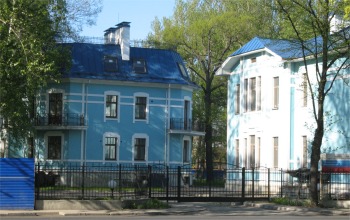 Dachas on Krestovsky Island |
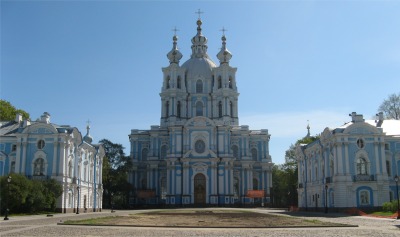 Smolnyy Cathedral and Smolnyy Convent |
It was interesting talking with Vladimir about his view of the political history and the daily lives of people across Russia. The country had its fair share of emigration and immigration issues.
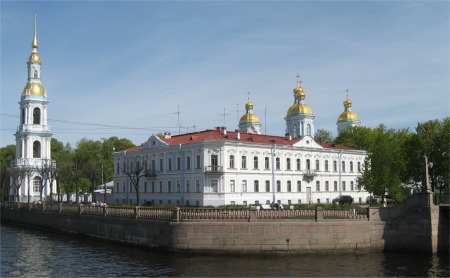 St Nicholas' Cathedral and Bell Tower on the Left |
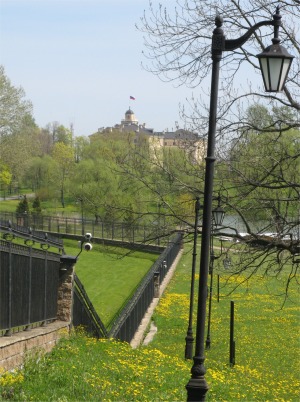 Putin's Palace Note the Alarmed Fence with Cameras |
Our tour continued out towards the countryside past huge areas of modern flats. In the city many old buildings were being pulled down to make way for modern flats. However, UNESCO was starting to complain that the city would soon begin to lose its character if the process was not stopped. It was noticeable that for some unknown reason, all the drainpipes in the city were of 30-50cm diameter. Another feature was that all the roofs were shallow. We asked Vladimir about this, and he went on to discuss the problems the city faced during winter. Men would often venture out onto the roofs and poke the thick snow down before it became too much of a hazard. However, once the snow was on the ground, the problem still remained of how to dispose of it. It couldn't just be dumped in the river since the river would be frozen over, and the snow would be piled high. It was a recurring problem, and seemed to be getting worse. The trend still seemed to be to opt for shallow or flat roofs. He told us of one large building which had been built with a flat roof, and had actually collapsed in on itself due to the weight of snow on its roof, having tragic consequences for those inside at the time.
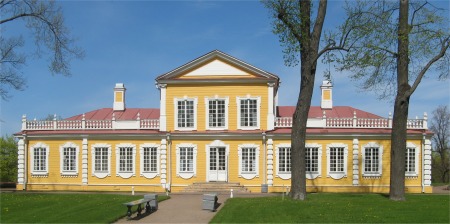 Prince Constantine's Summer Residence |
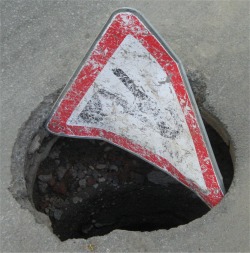 A 1m Wide Hole in the Road! |
Dan and I took a walk through the Central Park of Rest and Culture. Since it was Sunday, it was packed with families basking in the warm sun, and participating in the multitude of activities organised for the children. It seemed as if the whole city was out enjoying these simple pleasures.
In the evening we ambled along to the western extremity of the island where a new stadium is currently under construction. Zenit is the leading St Petersburg football club, which has frequently lead the Russian top league as well as had good international success. Retracing our steps, we retired to a restaurant we hadn't tried before. The service here was diabolical. Dan and I were given our starters, and then not long afterwards our main courses arrived, whilst Alan and Rex were foaming at the mouth still waiting for sight of their starters. No tip here!
A noisy disco at a nearby club provided background music to our slumbers until 06:30; Alan was delighted.
23rd May
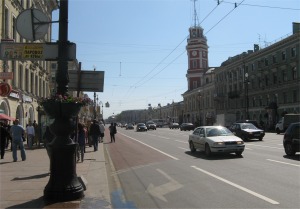 Nevskiy Prospekt |
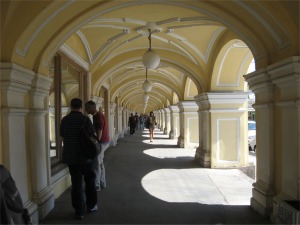 Gostinyy Dvor |
Once we had that taken care of we headed off along the busy Nevskiy Prospekt, the city's main thoroughfare and artery. A small detour was made to window shop in one of the columned arcades of Gostinyy Dvor. Gostinyy dvor literally meant a coaching inn, but as trade flourished around the inns, with travelling merchants setting up their stalls, it later came to mean "trading rows". The original wooden structure was burnt down in the early 18th century, and its latest turbulent phase was during the Siege of Leningrad. Today, this prominent yellow building, with its columned arcade and massive porticos, retained its layout of "stalls".
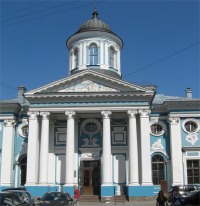 Armenian Church |
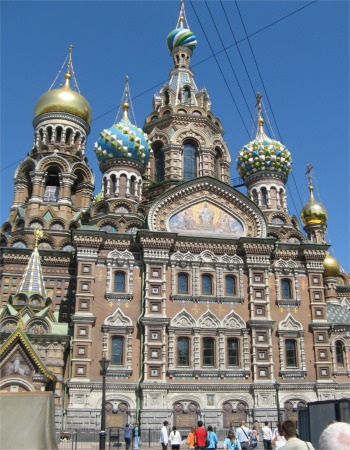 Church on Spilled Blood |
Cutting across to Kanal Griboedova, and picking our way through the mess and din of one of many of St Petersburg' road works, all lacking public safety measures, we arrived at the Church on Spilled Blood. This place of worship was built upon the spot where on 1st March, 1881, Tsar Alexander II was assassinated. The exterior of this fine domed building was a riot of colour created by the clever juxtaposition of materials. Sadly, with large queues, we opted not to venture inside the church.
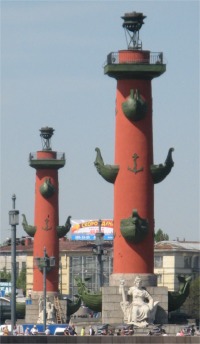 Rostral Columns |
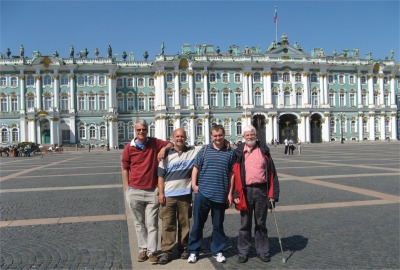 Rex, Me, Dan and Alan in Front of the Winter Palace |



